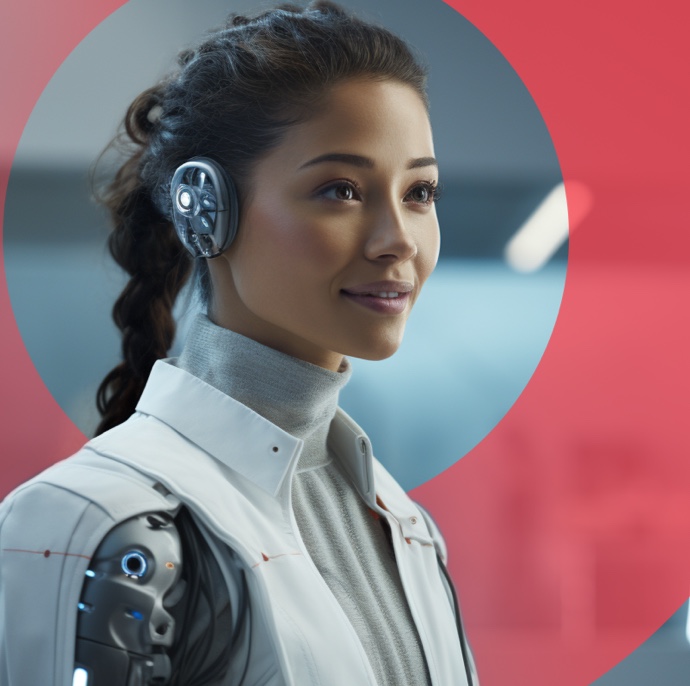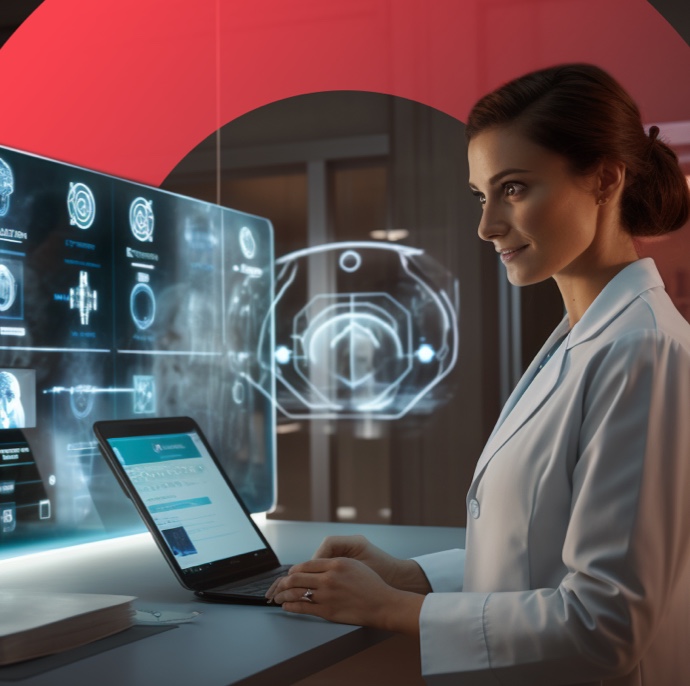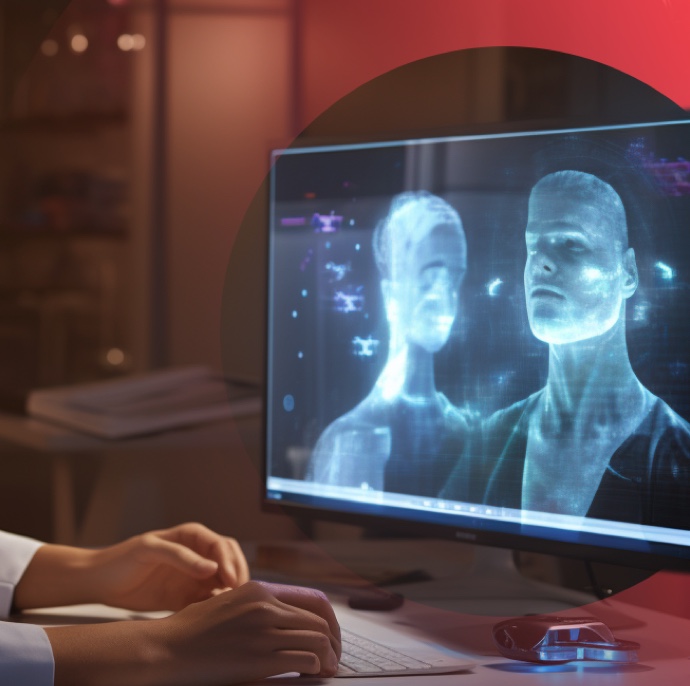What issue can we solve for you?
Type in your prompt above or try one of these suggestions
Suggested Prompt



Health
The Future of Health: Using Generative AI to Reimagine the Patient Experience
Artificial intelligence has the potential to significantly transform patient care experience as well as automate processes within provider, payer and pharmaceutical organizations. With generative AI evolving rapidly, what steps must healthcare organizations take in 2024 and beyond to improve clinical outcomes and keep the focus on patient experience with generative AI?
Generative AI will change the game for how patients navigate the healthcare system, putting human relationships and personal experience at the center of provider organizations’ strategy for 2024. While these priorities have always been at the heart of healthcare, generative AI has the power to scale the use of patient data to transform clinical health outcomes and patient experience at a previously unheard-of pace.
Current platforms like ChatGPT can perform the following tasks:
- Create customized summaries that can be used to condense complicated medical diagnoses and treatment plans
- Simplify complex concepts to reduce patient confusion and empower them with the information they need
- Create content in different languages to help serve diverse patient demographics
The question remains: What should healthcare professionals focus on with generative AI when looking at the year ahead?
Patients report better clinical outcomes with better patient experience
Patients engaging in digital experiences do far better; they are three times less likely to have unmet health needs, and cancer patients who engaged in digital support had a significant drop in ER visits and survived five months longer on average compared to individuals who didn’t use digital tools to support their healthcare needs.
When patients, both past and present, talk about a good healthcare experience, they usually mention an individual provider or clinical team who took great care of them. On the other hand, bad patient experiences are costly in terms of both provider reputation and litigation, affecting malpractice insurance premiums and pitting providers against patients.
Keeping healthcare quality indicators, including compassion, top of mind is a priority for medical organizations, with 71 percent of patients reporting that they’ve experienced a lack of compassion when speaking with a medical professional. Doctors, nurses and medical technicians, as well as paramedics and other practitioners, are facing increasing pressures to deliver, working excessive hours and dealing with patient frustration, often on a minute-to-minute basis.
Ultimately, it’s a diagnosis for burnout and poor patient experience. Healthcare leaders should always be looking for ways to ease the strain on their people and optimize operational efficiency while improving patient satisfaction. In a healthcare industry that is focused on applying technology to solve their problems from an automation and experience perspective, generative AI will help the healthcare industry to achieve this strategically.

“We are now seeing the potential of using AI to drive and scale these personal experiences, placing relationships back at the center of care.” – Hugo Manassei, GVP, Healthcare Transformation
What patients and the industry are asking for: healthcare, personalized
Patients have long been asking for a future of healthcare where digital healthcare technology rapidly evolves to enable medical teams to:
- Diagnose and treat medical problems faster and more seamlessly
- Provide a comprehensive approach to treating patients across systems and reports
- Alert patients with preventive recommendations to lower the risk of adverse health outcomes in the future, like heart disease or diabetes
- Provide a connected end-to-end experience to meet them where they are with their health needs, from initial encounter to discharge
In order to align generative AI’s capabilities with patient expectations and business needs, healthcare business leaders looking at this from a revenue cycle perspective will need to develop strategic plans for applying generative AI in both front-end (scheduling, patient registration, eligibility and authorization) and back-end (claims management, reimbursement) processes. Generative AI can even review its own outcomes, using data from patient satisfaction surveys, net promoter research, and data analytics to ensure that organizations are on the right track with the initiatives implemented.
Testing a use case for ChatGPT in healthcare
Publicis Sapient recently used ChatGPT to develop a series of prompts based on an individual’s health situation geared toward finding out if the tool could support better health outcomes and found the following trends to report on:
Dialogue flow is limited, and ChatGPT has a tendency to take action straight away
- Responses are extremely verbose; ChatGPT produced 40,000 words in response to 97 prompts
- Responses tended to be generic and lacked nuance; however, it responded with empathetic phrasing and apologized when it got things wrong
More data equals stronger analysis
In the case of one interviewee, the team set out to test whether ChatGPT could help improve their health outcomes, by crafting a series of prompts focused on:
- How the individual could lead a healthier lifestyle
- How good ChatGPT is at recommending preventive health activities
- What advice it had for the employee to support a lifestyle condition, such as GERD (acid reflux)
The subject in this example was a white, middle-aged male living in the city with a sedentary lifestyle, a stressful desk job, two teenagers, aging parents and several health conditions.
While the input from ChatGPT was initially generic, the more data that was provided (for example from the Apple Health app) the more ChatGPT provided stronger answers (e.g., when answering a question about a potential colonoscopy). This speaks to the need for effective implementation of patient data in generative systems to create more robust opportunities for use as the technology continues to develop.
Solving for the current limitations of generative AI
AI and machine learning are currently being used in healthcare; however, there are a few hurdles to overcome before generative AI will become fully embedded in future healthcare ecosystems.
-
![]()
Ability to show empathy
Currently, it’s difficult for generative AI to show a level of empathy comparable to human medical providers. Healthcare professionals should focus on how patient experience can be reimagined in this area so that patients can get their questions answered with compassion and humanity by virtual customer service representatives.
-
![]()
A proactive mindset
Being able to anticipate patient or member needs proactively requires an understanding of context. While software like ChatGPT can do this to a limited extent, generative AI of the future will be able to make these kinds of decisions faster, using patient data to drive personalized patient health insights.
-
![]()
Addressing bias
To counter concerns of bias within data and training algorithms, healthcare organizations will need planning and strategy to ethically organize data in healthcare customer relationship management (CRM) software that uses generative AI.
What generative AI has in store for the future of healthcare
Generative AI has the potential to accelerate digital experiences, moving it from the impersonal to personal by using data to create valuable relationships between providers and patients, ultimately leading to improved health outcomes and automation of day-to-day functions at scale.
In the coming year, even generative AI’s current capabilities could be harnessed for:
- Triaging the priority of a patient’s health condition with generative AI using virtual emergency rooms or home equipment such as a portable pulse oximeter, building on same day emergency diagnosis services already in existence
- Developing automated text messaging services such as a Crisis Text Line to help individuals in crisis connect with mental health practitioners or fill prescriptions
- Automating providers’ customer relationship management (CRM) capabilities like producing welcome letters and generating automated reports
- Streamlining claims management, auto-generating prior authorizations, creating claims summaries and drafting responses to appeals and grievances
Practitioners should take the next step now and consider how generative AI in 2024 can be embedded not only within specific digital tools, but in patient care management as a whole.
To learn more about maintaining a competitive edge and unlocking new sources of value through generative AI, reach out to Tim Lawless below.
Related Reading

Insight
The Future of Healthcare
Over the next decade, patient-centricity and a focus on value-based care will disrupt, innovate and transform the entire healthcare industry.







